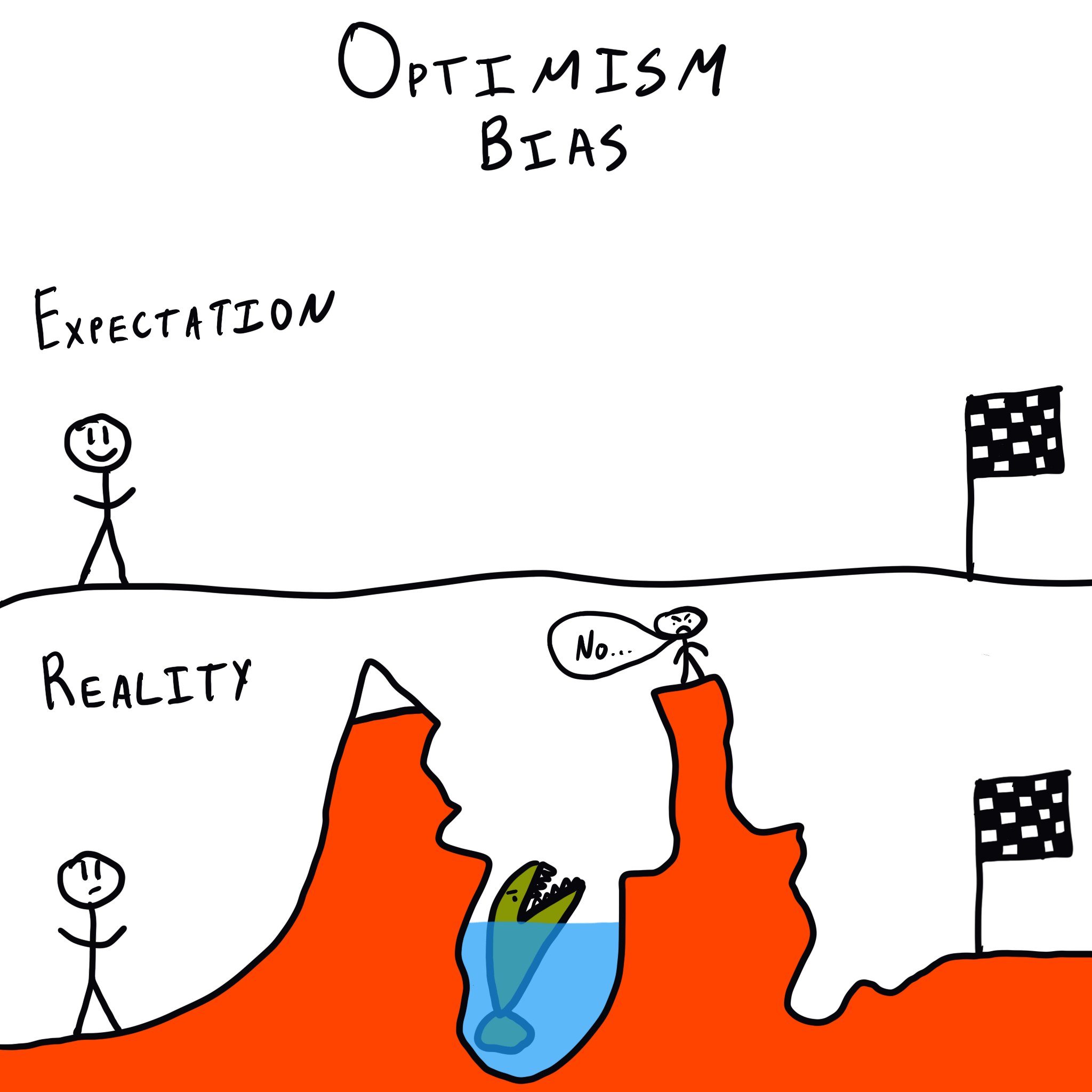Why do we overestimate the probability of success?
Optimism Bias
, explained.What is Optimism Bias?
The optimism bias refers to our tendency to overestimate our likelihood of experiencing positive events and underestimate our likelihood of experiencing negative events.

Where this bias occurs
Consider the following scenario: Tom is a bright and motivated entrepreneur who is in the midst of starting his own restaurant. Previously, six businesses failed in the same building he purchased. Each venture fell short of earning the necessary returns to stay afloat and was forced to close. However, Tom feels as though he has what it takes to make his restaurant a success. After all, he graduated at the top of his class, is overflowing with big ideas, and is in touch with the pulse of young city-goers.
Tom pours his time and money into the venture, refusing to yield to shortcomings or accept failure as an option. His friend warns him that the street layout and surrounding competition make it difficult to draw pedestrians into the area. Tom still feels he can overcome these obstacles with his expertise. However, Tom’s restaurant fails to sustain enough business and is unfortunately forced to shut down—just like the rest before him.
In this scenario, Tom exhibits the optimism bias because he refuses to take into consideration the past six businesses that failed before him as well as the environmental factors working against him. However, Tom confidently believes he can outperform the rest because of his abilities as an entrepreneur. But at the end of the day, his likelihood of failing is statistically the same as everyone else's, resulting in his inevitable failure.


















